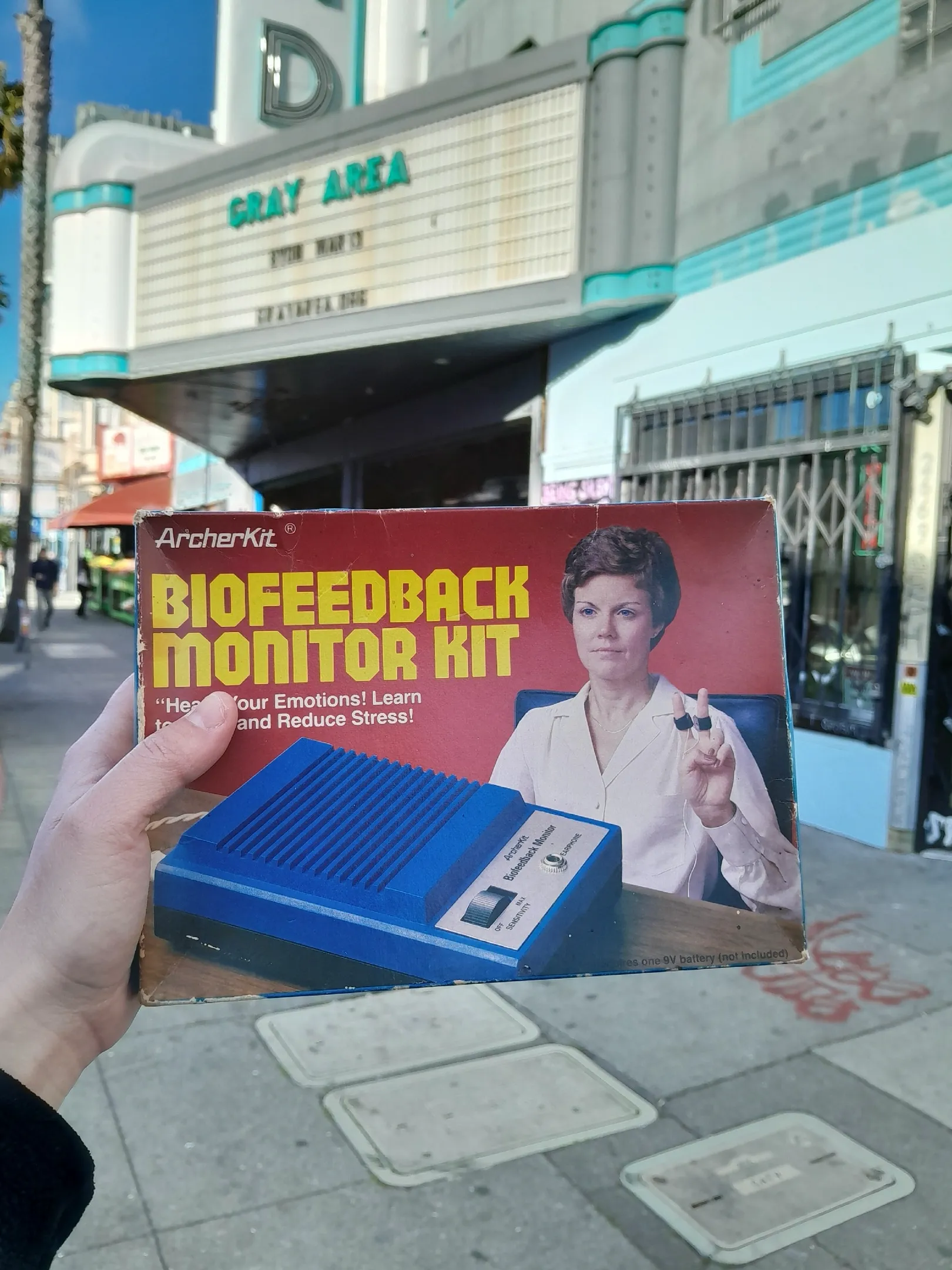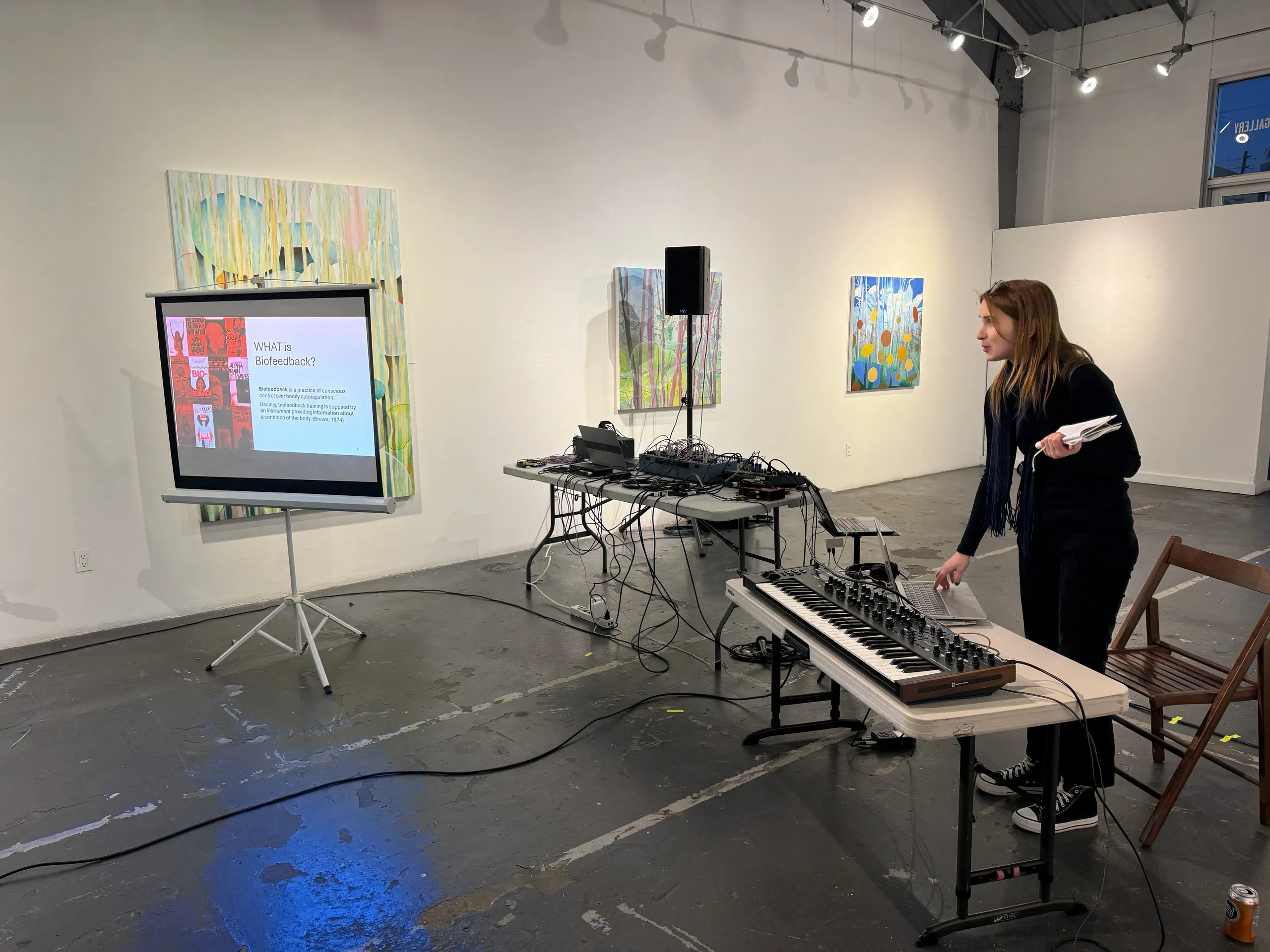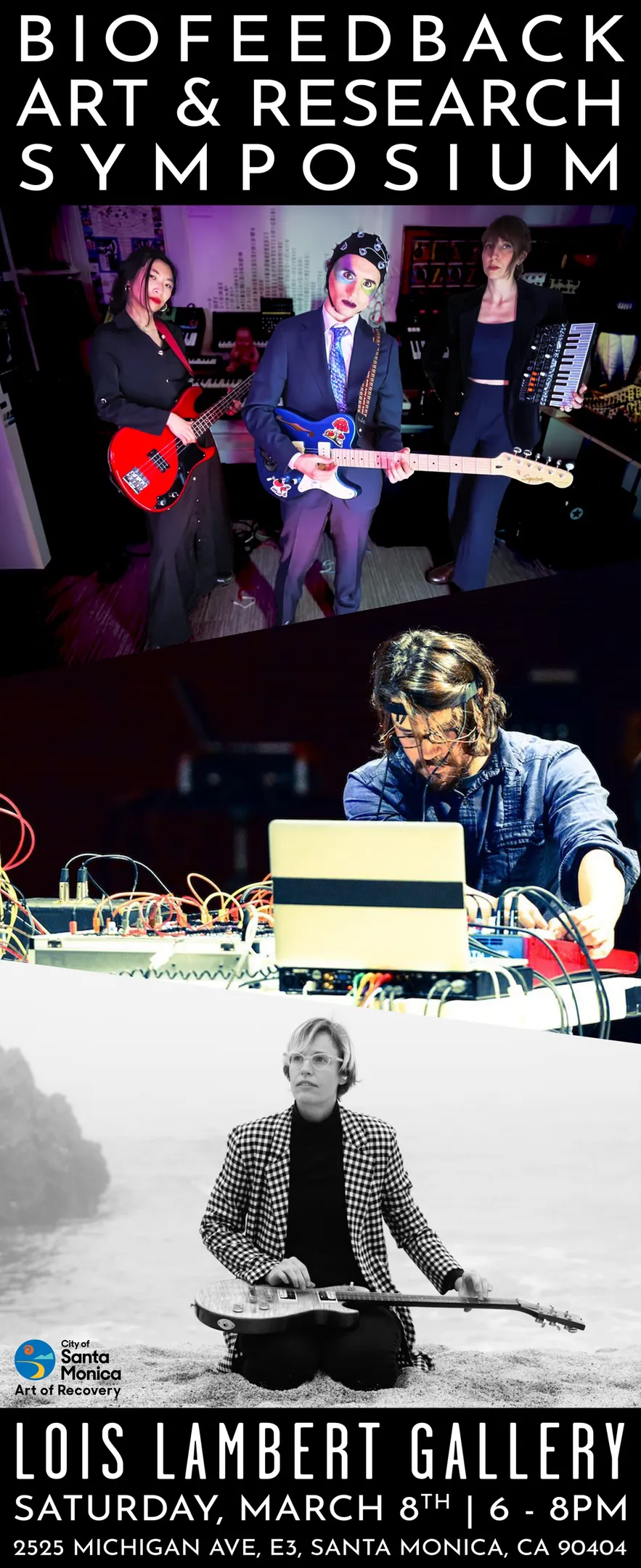Origins of the Network
You recently started a network for biofeedback artists and researchers. Can you tell me more about its origins?
Biofeedback Art Research Network, supported by Gray Area (a San Francisco-based non-profit organization), is a professional association that is here to highlight and platform the work of a new generation of biofeedback artists. Geography of the current members spans North America, Europe, East and South Asia, and Australia, but we hope to grow and cover all continents. As the Network’s name implies, the community is comprised of artists, scientists, and scholars who may be affiliated with academia or pursue a track of independent creatives. Our priority is to facilitate creative and intellectual exchange within the community and beyond, and to nurture a sense of comradery among the members.

What is Biofeedback Art?
What is biofeedback art in 3 sentences? Where is it situated in the genealogical tree of arts? How would you map it?
Biofeedback art is a relatively new and innovative form of artistic expression that uses biofeedback technology to create interactive and dynamic pieces of art. By measuring physiological responses such as heart rate, brain waves, and skin conductance, artists are able to create artworks that respond and adapt to the viewer’s own physiological state. Emerging around the 1970s, biofeedback art followed the popularization of biofeedback therapy that is based on the principle of voluntary control of otherwise unconscious physiological processes based on real-time communication of data through visuals or sound.
As far as the mapping goes, biofeedback art may be deemed as a subgenre of bioart. Its particular manifestations, such as biofeedback music, may be considered a “doppelganger” of minimalist music – drone a-la La Monte Young, to be specific.
Driving Ideas Behind the Network
Could you tell about the driving ideas behind the Network? Are there people of impact whom you would like to shut out?
The idea of the network came out of the need to update the half-century-old narrative about the practice and learn about emerging artists from around the world whose work isn’t captured in the books yet. The lack of means for offering immediate compensation to contributors to the edited volume made me think of ways to create something that would be of service to members of the creative and research community. Thus, the concept of the Biofeedback Art Research Network, the first professional community associated with the niche field, came into existence. Just as the aspired book project, the network serves to recognize and honor the diversity of experiences and identities of practitioners who came to the scene after the 1960s.
Past a couple of months after participating in a Graduate Consortium of the International Conference New Interfaces for Musical Expression (NIME2024), which left me with no relevant feedback or critique – expected in a setting of this kind, I made a leap of faith trying to establish the “ecosystem” for the informed conversation and exchange between artists and researchers who are capable not just to reiterate the names from the canonical book but to shift the paradigm set up by “Biofeedback and the Arts" published in 1975 by A.R.C. Press. I keep referring to Canadian composer Erin Gee addressing the stigma around affective biofeedback as an inspiration to both my return to the topic and the start of acting on the status quo in the field. Of great encouragement has been Robert Fink, Professor at Herb Alpert School of Music at UCLA, and a noted specialist on minimalism turned to research on EDM (Electronic Dance Music). Michael Masucci of EZTV showed me a great example of pushing the envelope despite resistance, rejections, and lack of immediate acknowledgement of the efforts.
Future Plans for the Network
What’s next for the Biofeedback Art Research Network?
Let’s start with a few words about the timeline. Between 2022, when I put together an event series featuring a brainwave performance and a collaboration with the Mind in Vitro NSF Expedition, and 2024, many things changed for me, which included relocation from Urbana (Illinois) to Los Angeles and leaving the PhD program. For a period of time, I abandoned the topic of my dissertation research and the about-to-begin creative practice. Thanks to a non-intentional nudging of the already-mentioned friends and mentors, I began taking tiny steps toward returning to the field I had to step out of. In May 2024, I gave an invited lecture at UCLA about the topic. Then I proceeded with the NIME presentation in September. In October, I began gauging the possibilities of endorsement of what was to become a network. The initial intent was to make it a “chapter” under the umbrella of a bigger, already established organization, since starting something on my own was too intimidating. Because of the waiting time for inquiries and diminished agency associated with the “stemming” scenario, somewhat organically, the Network became a thing of its own. Within a month after being announced, a number of people reached out to me about joining and generously shared their work. People’s response to the initiative has been rewarding beyond my expectations.

This March, I arranged a symposium at Lois Lambert Gallery of Bergamot Station Arts Center in Santa Monica. The event featured contributions of three musicians-researchers (Alex Chechile, Barbara Nerness, and Micah Huang w/Kenny Zhao) who employ biofeedback as a tool for creating music that responds to physiological signals of performers and/or listeners. It was fun to revisit the local legacy as I prepared an application for a grant from the City of Santa Monica Cultural Affairs. I think the little know the fact that the Biofeedback Research Society was founded in the City of Santa Monica by a woman scientist Barbara Brown (UCLA/Veteran’s Administration), in 1969 could serve as a good premise for re-negotiating the relevance of biofeedback art and addressing robustness of its output as of a hybrid art-science practice.

I’ve been very fortunate to receive the support of Gray Area, known as a hub for radical artistic expression that traverses disciplinary boundaries. In the coming months, I hope to develop a “body music” series that may find a landing there, as I’m currently based in the Bay Area. Along the way, we may have a few thematic screenings covering the local legacy of biofeedback research and experimental art. As for other news: this coming August, Barbara Nerness and I will offer workshops on biofeedback music in Santa Cruz and San Francisco. Stay tuned for announcements.
Staying Updated with the Network
What’s the best way to keep up with the Network’s updates?
Most come through LinkedIn, where opportunities are being posted, and on Instagram or Substack, you can find more engaging narratives about the past and present of the practice.
Last updated: 10 Jun 2025
